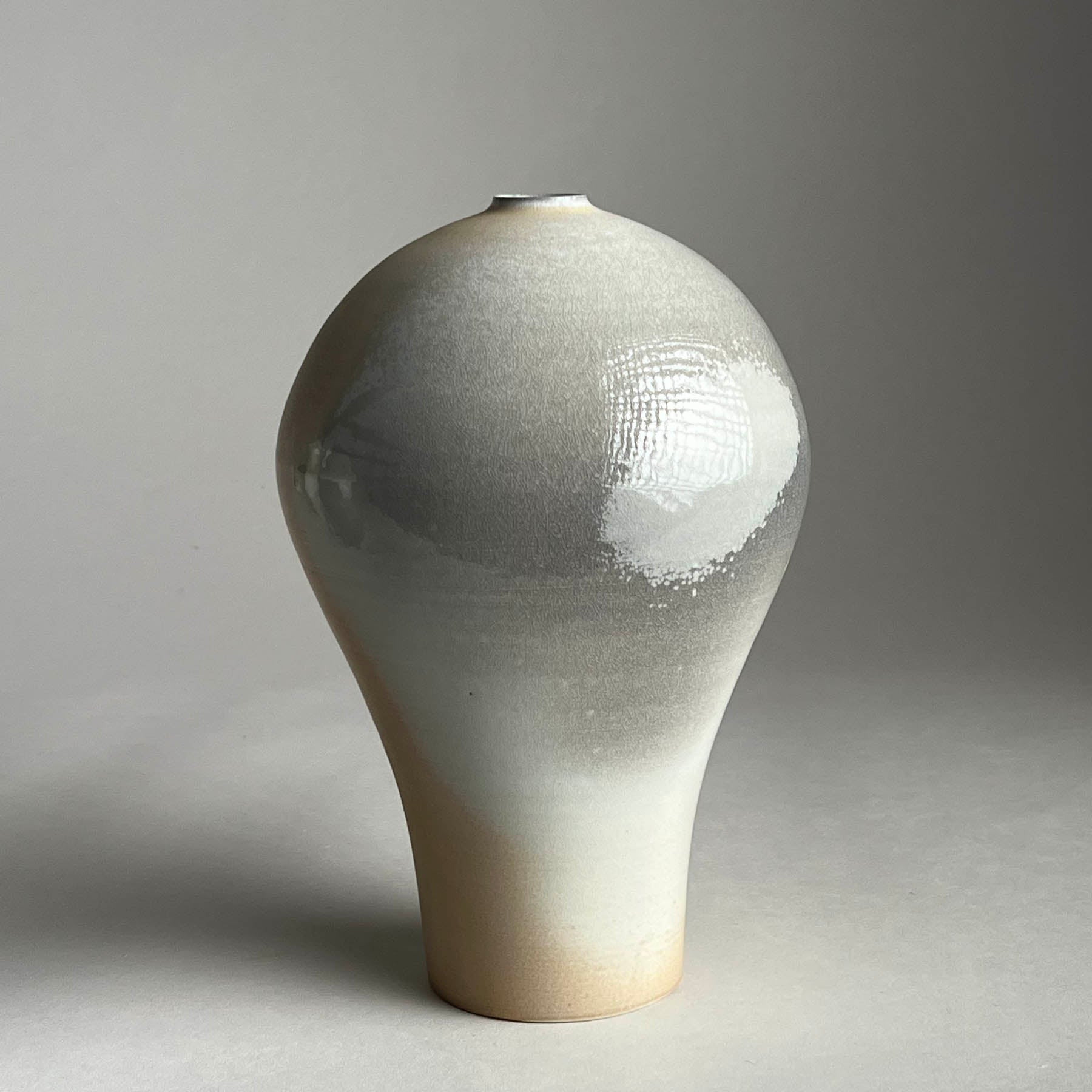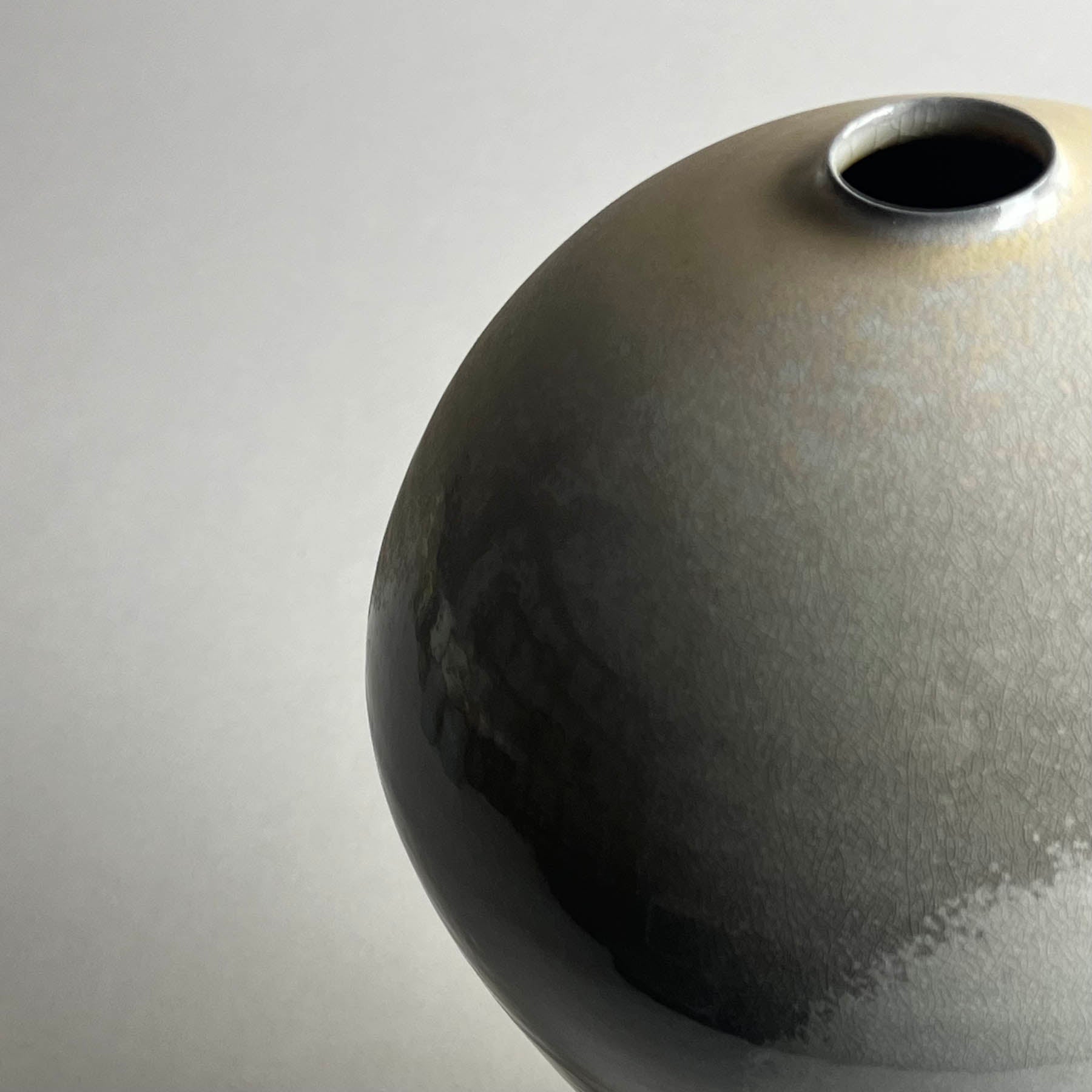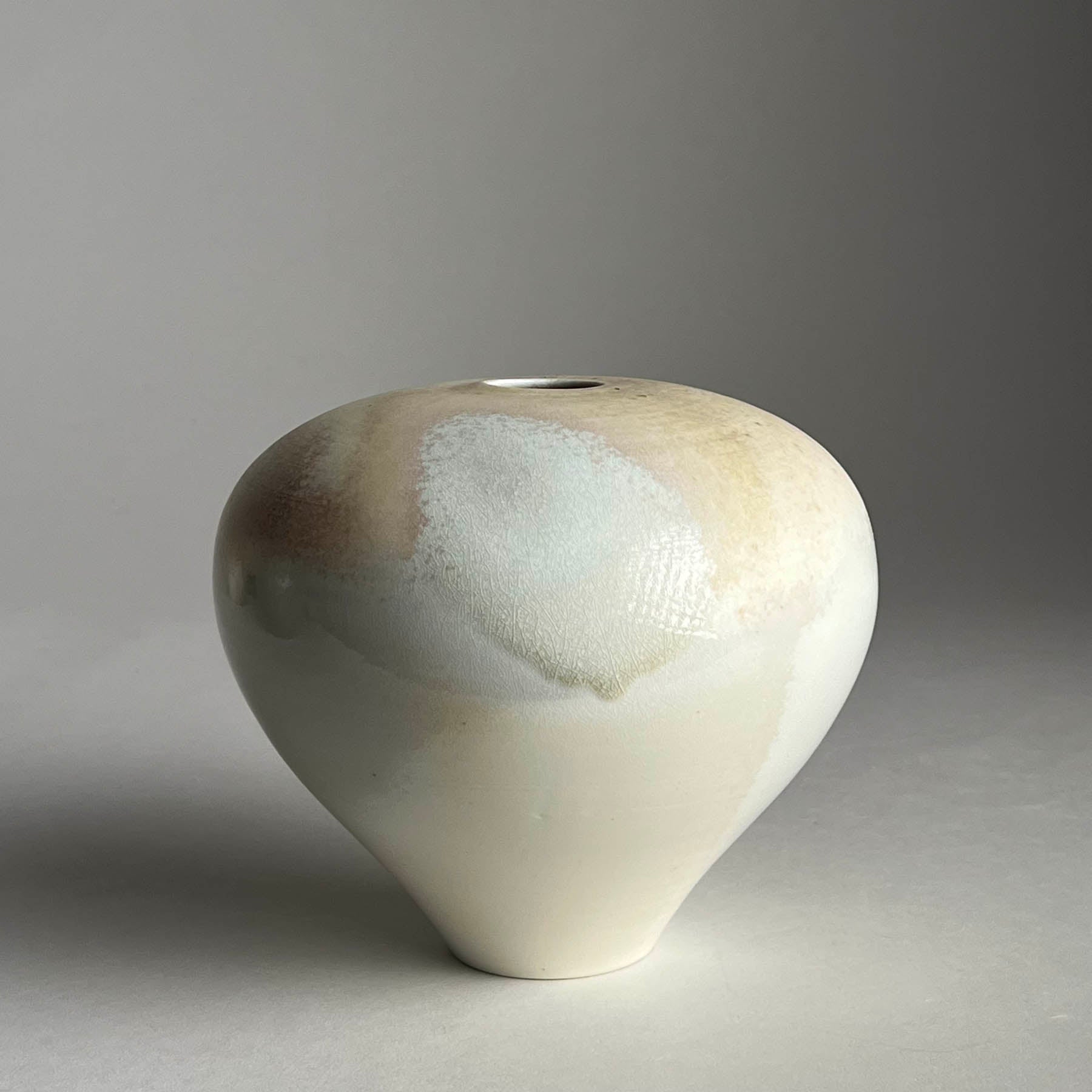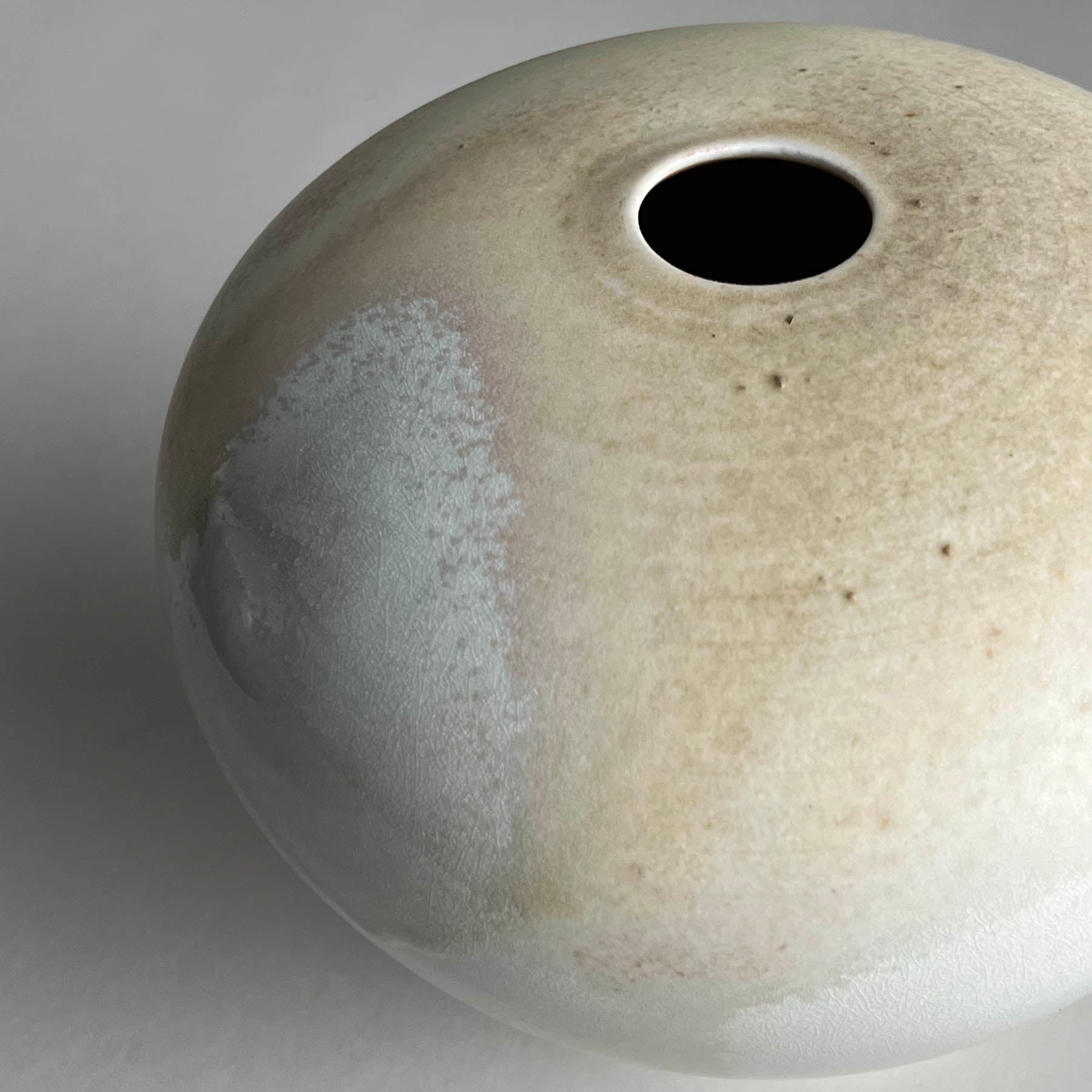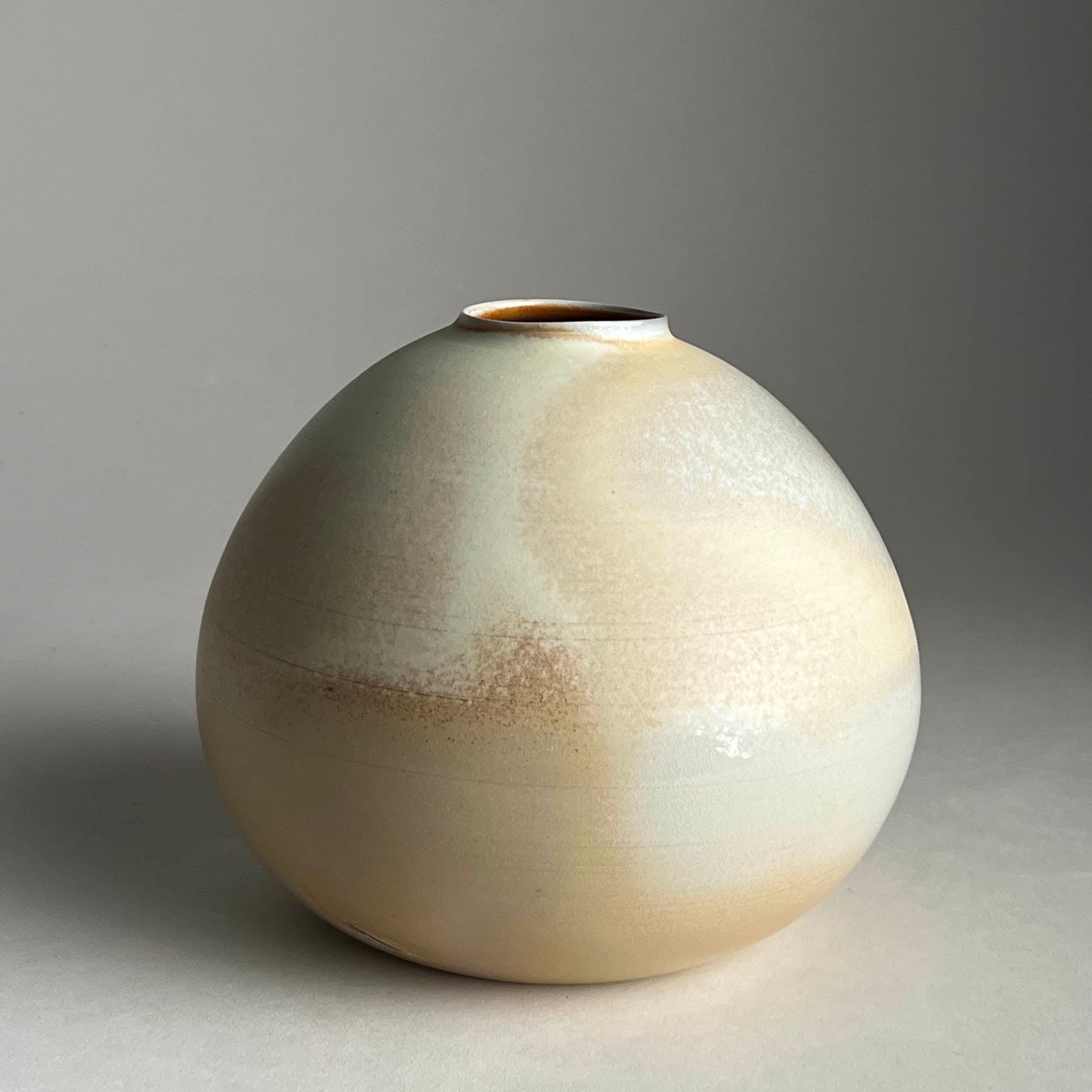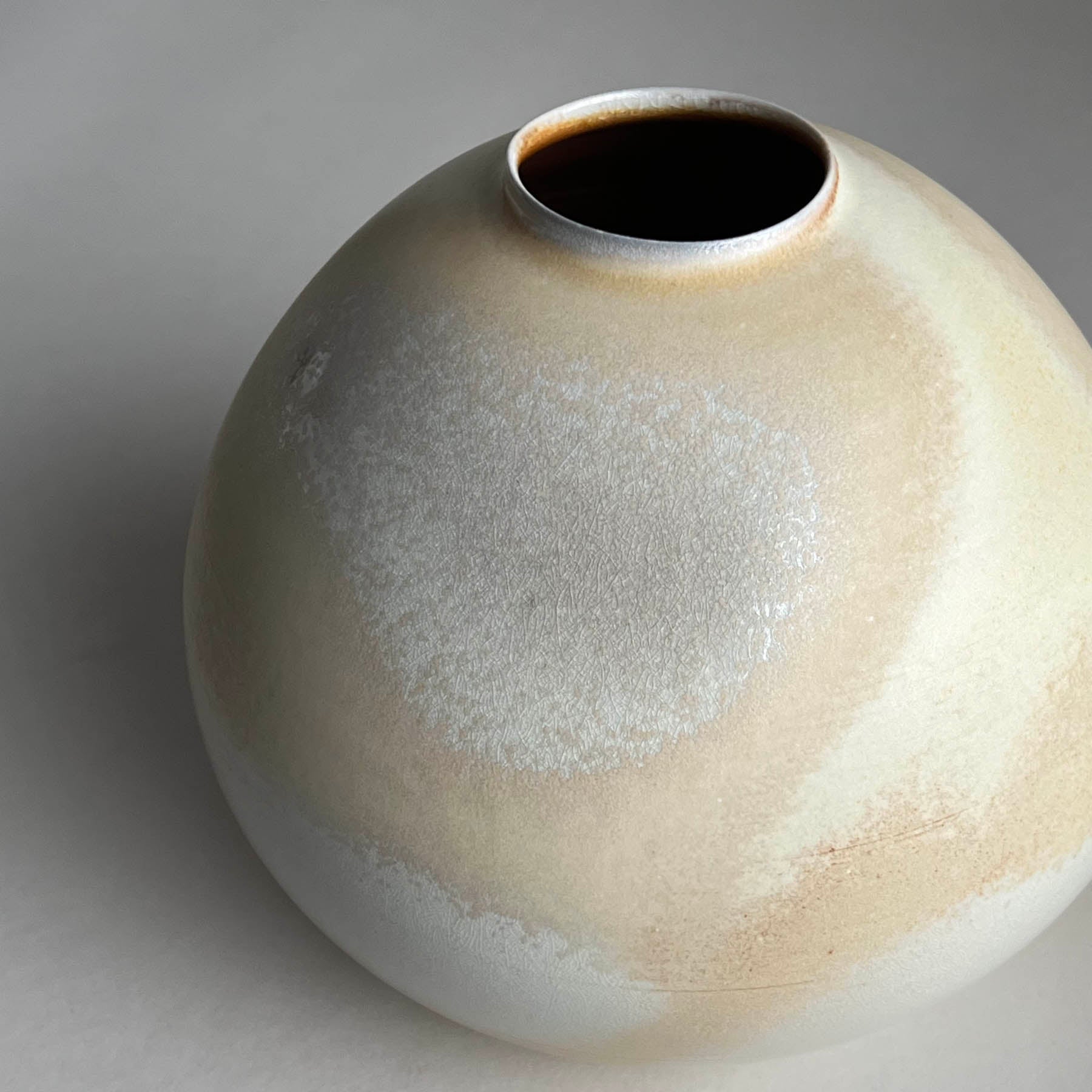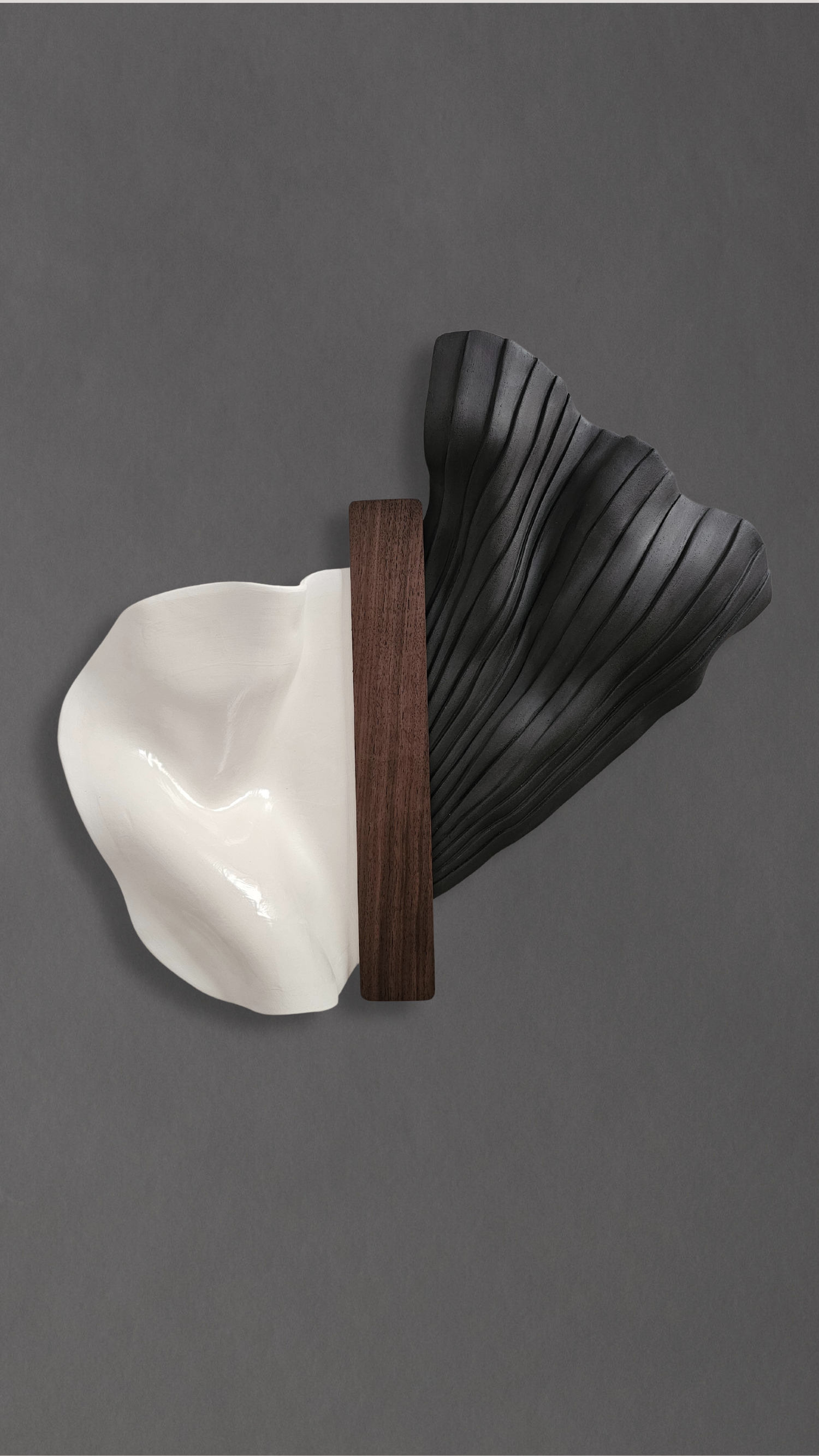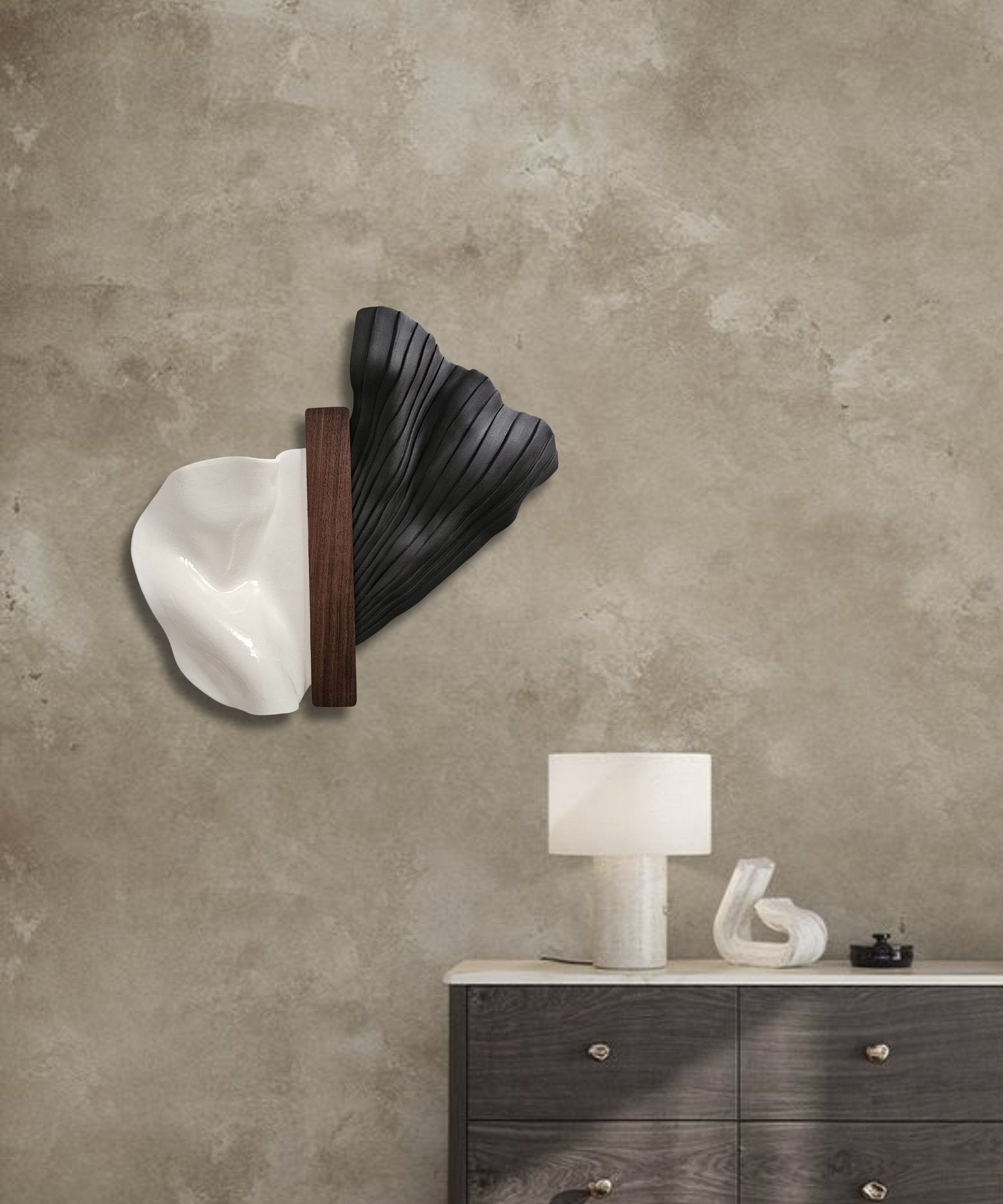Porcelain Mastery: Techniques That Define Excellence
Porcelain has a presence that feels both ancient and startlingly modern. It is light yet resilient, luminous yet exacting. Collectors treasure it for the way it captures light, the purity of its surfaces, and the quiet discipline it demands from the hands that form it. At Trove Gallery, we believe the best way to understand porcelain is to experience it through the work of the makers who shape it into artworks that live beautifully in our homes. This material story explores how porcelain is made, the porcelain pottery techniques that define excellence, and the singular visions of four artists whose pieces elevate any collection.
From Kaolin to Kiln: How Porcelain Is Made
The story of porcelain begins with geology. The body of true porcelain is built on kaolin—a fine, white clay known for its purity—blended with feldspar and silica to achieve strength, translucency, and a distinctive ring. In the hands of an attentive maker, these minerals unify to form a body that can be thrown thin, carved precisely, and fired to high temperatures without losing integrity.
Refining the clay is the first act of craftsmanship. Makers carefully wedge and de-air porcelain to remove bubbles and align particles, ensuring uniformity during forming and firing. The clay must be just plastic enough to respond to the touch, yet stable enough to hold a razor-clean edge. This disciplined prelude sets the stage for the techniques to follow.
Forming is where intention meets touch. Wheel-throwing highlights porcelain’s capacity for thin walls and exact profiles; slab-building underscores its architectural potential; slip-casting leverages repeatability for forms that must be consistent and featherlight. Each path requires a different reading of the clay’s temperament on the day—humidity, aging, and even studio temperature can shift how porcelain behaves under the maker’s hands.
Drying porcelain is a study in patience. Its fine particle size and low tolerance for moisture imbalance mean that even, slow drying is critical. Makers will often cover pieces, turn them at intervals, and allow forms to rest so stresses can disperse before trimming or carving.
Firing brings porcelain to life. After a bisque fire that stabilizes the clay body, the glaze fire—often exceeding 1,230°C (2,246°F)—is where vitrification happens. The body and glaze fuse, glass phase develops, and the surface gains its characteristic sheen or satin depth. Oxidation fires yield flawless whites and crisp glazes; reduction and wood firings invite fluxes, flashing, and mineral-rich atmosphere to leave their imprint on the surface. The kiln is not merely a tool but a collaborator—every firing a conversation between heat, time, and the maker’s intent.
Porcelain Pottery Techniques That Define Excellence
Across studios, porcelain mastery is distinguished by a set of disciplined, expressive techniques. These porcelain pottery techniques are not merely procedural; they are artistic dialects through which makers speak.
Throwing for precision: The wheel reveals porcelain’s elasticity and memory. Thin, continuous pulls create luminous walls that carry light through the form. Rims are trued to sing with clarity; foot rings are refined so objects appear to hover on a line of shadow.
Trimming and carving: Once leather-hard, porcelain invites sculptural refinement. Sharp tools skim to remove weight, define profiles, and introduce faceted or fluted textures. Incised lines read like shadow drawings; pierced elements maintain strength thanks to porcelain’s vitrified density.
Slip and inlay: Colored slips and porcelain inlay techniques allow makers to draw into the skin of a piece, embedding line work or tonal shifts that remain part of the porcelain body—never merely on top of it.
Burnishing and polishing: Some makers leave pieces unglazed and painstakingly polish surfaces to a soft, tactile sheen. Porcelain’s tight particle structure allows for a velvety finish that feels both intimate and architectural.
Glazing with restraint: Porcelain rewards restraint. Clear glazes showcase the clay’s natural luminosity; celadons pool in carvings; matte whites lend quiet confidence to architectural planes. The best glazes act like lenses, allowing the form to speak first.
Firing for character: Oxidation firing produces perfect whites and subtle glazes. Reduction speaks in blues, greens, and smoky opens. Wood firing, with its ash deposits and flame paths, creates natural markings that are impossible to repeat—evidence of fire’s brushstroke across the porcelain canvas.
Wood-Fired Quiet Drama: The Poetic Forms of Lilith Rockett
Wood firing and porcelain can feel like opposites: one wild and unpredictable, the other exacting and serene. In the hands of Lilith Rockett, they become a single, eloquent language. Her vessels are pared back to essential curves and featherlight walls, then offered to the kiln where ash and flame leave the faintest whispers—a blush on a shoulder, a soft halo on a rim—captured forever in the surface.
Consider Wood-Fired Porcelain Vessel 04 by Lilith Rockett (USD $1,008.00). The form is disciplined—quiet, upright, attentive—yet the wood firing paints a delicate gradient across the porcelain, as if light itself has settled there. This is the grace of wood-fired porcelain: the kiln becomes an artist in its own right, collaborating with the maker’s meticulous throwing.
Its companion pieces, Wood-Fired Porcelain Vessel 05 (USD $868.00) and Wood-Fired Porcelain Vessel 06 (USD $868.00), share this restrained poetry. Subtle variations in flame-kissed surfaces invite close looking; from a distance, the trio reads as a chorus in unison. Up close, each vessel reveals a distinct moment where ash settled differently or a current of heat traced a unique path. This tension between precision and unpredictability is the essence of porcelain mastery—craft and fire creating something alive.
Collectors often tell us that Rockett’s work changes with the day’s light. Morning finds soft, chalky whites turning to warm alabaster as the sun rises. At night, the pieces ground a room, appearing almost architectural in their clarity. This responsiveness is why wood-fired porcelain from a disciplined hand feels so at home in both minimalist and richly layered interiors.
Sculptural Dialogues in White and Earth: Marie‑Laure Davy
In the sculptural realm, porcelain becomes a voice in a larger conversation about form, contrast, and materiality. Marie‑Laure Davy orchestrates a powerful dialogue between porcelain’s luminous purity and the grounded, tactile presence of stoneware. Her Abundance series pairs white porcelain with richly toned stoneware bodies, allowing each material to heighten the other’s strengths.
Abundance Sculpture - Black Stoneware and White Porcelain (USD $1,582.00) weds deep, dark stoneware with porcelain that seems to glow from within. The contrast is dramatic yet balanced—a study in how opposing materials can complete each other. The black stoneware’s matte gravity frames porcelain’s lightness, guiding the eye along curves that read like a dance of eclipse and illumination.
In Abundance Sculpture - Red Stoneware and White Porcelain (USD $1,582.00), warmth enters the composition. The red stoneware offers a quietly radiant counterpoint to the porcelain’s cool luminescence, resulting in a work that feels intimate, even tactile from across the room. Texture plays an essential role—porcelain’s smooth surfaces sharpen the perception of stoneware’s earthy grain.
The series achieves a nuanced tenderness with Abundance Sculpture - Toffee Stoneware and White Porcelain (USD $1,582.00). Here, a mellower palette invites longer looking. The toffee tones deepen the porcelain’s whiteness, revealing how even subtle color can reframe the material’s character. Davy’s refined joins and contours speak to porcelain techniques executed with patience and clarity—shaping, drying, and firing for a seamless union.
Collectors drawn to sculptural work often seek pieces that anchor a vignette without overwhelming it. Davy’s sculptures do exactly that: grounded, luminous, and alive with tension, they hold a space with unusual grace. Their beauty lies not only in form but in the conversation between materials—an invitation to reflect on abundance as the balance between contrasts.
Architecture in Porcelain: The Urban Topographies of Caroline Desile
Where Davy explores dualities, Caroline Desile investigates structure. Her porcelain works move like cityscapes—planes, cantilevers, and elevations define rhythm and weight. Each piece feels considered from every angle, as if you were walking around a building and discovering how light and shadow redraw its lines.
District 01 (USD $1,011.00) suggests a neighborhood mapped in relief: edges softened by porcelain’s fine grain, surfaces catching highlights that shift through the day. There is a harmonious balance in the way volumes meet—precisely aligned yet never cold.
With Society 03 (USD $1,334.00), Desile refines verticality. The piece reads as a dialogue between lift and grounding, as if a skyline were distilled to its essential lines. Porcelain’s clean fracture strength enables delicate junctions and overhangs to maintain crispness—a testament to expert control over drying and firing.
City 04 (USD $668.00) offers a more intimate scale while retaining the architectural cadence. Here, negative space becomes a protagonist; the intervals between planes feel as intentional as the planes themselves. It is a lesson in restraint—an argument for how less truly becomes more when material, technique, and concept are in accord.
Desile’s investigations of balance reach a peak in Cantilever 01 (USD $2,668.00) and Cantilever 04 (USD $3,301.00). These works explore mass held in poise, with porcelain’s inherent strength allowing forms to project with confidence. The cantilever becomes both a gesture and a question: how do we hold space? The answers, rendered in porcelain, feel both serene and daring.
Completing the series are Mountain 01 (USD $1,334.00) and Clouds 01 (USD $778.00), which translate landscape into porcelain geometry. The former has a grounded presence—stable, elemental—while the latter introduces lift and light, echoing sky forms. Together, they propose a way of collecting: assembling a personal topography through pieces that speak to one another across the room.
Luminous Minimalism: Beverly Morrison’s White & Gold
Light becomes tangible in the work of Beverly Morrison, where porcelain’s cool radiance meets shimmering gilded accents. Her vessels are studies in proportion and glow: crisp silhouettes that feel timeless, surfaces that shift from soft matte to reflective shimmer in a single arc.
White & Gold Vessel 125 (USD $4,830.00) is at once minimal and sumptuous. The piece reads like a column of light, crowned with warm luster that catches the room’s movement. In this union of white and gold, porcelain’s translucency and the metal’s reflective depth amplify one another, turning a vessel into a focal point.
Its companion, White & Gold Vessel 119 (USD $3,180.00), embraces a slightly different proportion—an invitation to collect in pairs or grouped trios. Subtle differences in shoulder and foot create visual rhythm, while the gilded accent offers a quiet gleam. Morrison’s control over curve and line—achieved through exacting throwing and measured refinement—lets light finish the story.
Porcelain’s minimalism is not about absence; it is about clarity. In Morrison’s hands, clarity becomes luminous—an understated luxury that does not shout yet fills a space with presence. These are vessels for rooms that breathe, that reward close looking and thoughtful placement.
Caring for Fine Porcelain and Building a Collection
Porcelain rewards a gentle hand and mindful display. Wash glazed pieces by hand with a soft sponge and mild soap, avoiding abrupt temperature changes that can stress the body. For works with gilded accents or unglazed sections, use non-abrasive cloths and avoid harsh detergents. When placing sculptural pieces, choose stable surfaces away from high-traffic edges, and consider felt pads on the base to protect both piece and furniture.
Collecting porcelain is a journey of the eye. Let technique guide you: look for confident walls, even proportions, and refined foot rings. Study how light travels across the form—is the surface alive? Does the glaze serve the shape? In wood-fired work, attend to the harmony of firing marks with the underlying form; in architectural pieces, examine how planes meet and how negative space is used; in luminously gilded vessels, observe how accents balance and emphasize structure.
Above all, listen to the maker’s voice. The pieces in this edit reveal four distinct dialects of porcelain mastery—from Lilith Rockett’s wood-fired quietude to Marie‑Laure Davy’s material dialogues, Caroline Desile’s architectural poise, and Beverly Morrison’s luminous minimalism. Each approach illuminates what porcelain can be: not just a material, but a language of light, balance, and touch.
Whether you are beginning a focused collection or adding a singular statement piece, start with the work that holds your gaze. Build slowly. Pair contrasts—wood-fired vessels beside architectural porcelain; sculptural forms beside luminous whites. Over time, your collection will tell a story that is uniquely yours, anchored by techniques and materials that have stood the test of centuries.
Ready to explore the pieces featured here? Visit each maker’s collection—Lilith Rockett, Marie‑Laure Davy, Caroline Desile, and Beverly Morrison—and experience how porcelain mastery comes to life across different voices and visions.
Bring porcelain mastery home. Explore our featured works—Wood-Fired Porcelain Vessel 04, Vessel 05, Vessel 06; the Abundance series; the urban poise of District 01, Society 03, City 04, Cantilever 01, Cantilever 04, Mountain 01, Clouds 01; and the luminous allure of White & Gold Vessel 125 and 119. Each is an invitation to live with objects shaped by mastery, fired by intention, and meant to be cherished for a lifetime.
